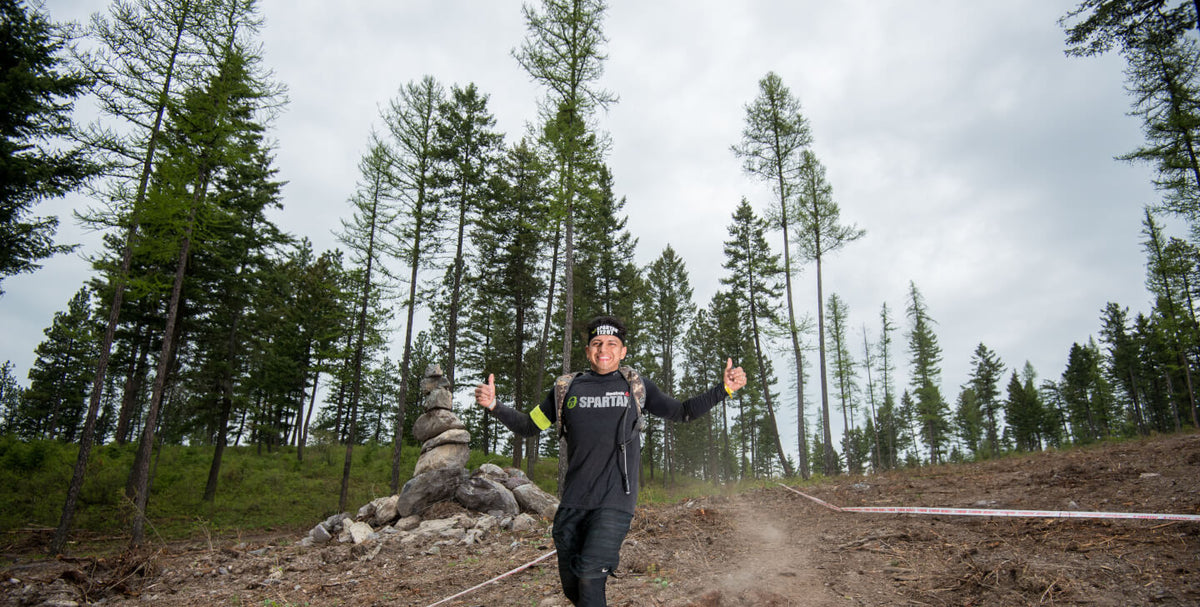Spartan Trail Series: Everything You Need To Know

In 2018, Spartan released a new race series: Spartan Trail, a fresh challenge that brings back the basics of running free. Here, everything you need to know about the series, from the history of trail running to preparing for Spartan Trail yourself.
The Origins Of Trail Running
The origins of modern-day trail running can be traced back to 200 years ago, when youth began to record their off-road escapades in the dark and swampy moors of England in an effort to mock the fancy fox hunts on horseback of the privileged elite. They hurdled logs, vaulted hedges, and partook in running ‘out-of-bounds’ in events so scandalous that authorities did everything they could to curb their efforts.
As generations passed, “hunt the fox” on foot segued into the various forms of athleticism that became steeplechases, fell running, hashing, cross-country, and trail running. Even modern-day obstacle course racing can trace some influence to these efforts.
It wasn't until the 1980s that popular trail runs, like Colorado's famous Leadville 100, emerged in the United States. It took another decade for the sport to legitimized, with the birth of the American Trail Running Association and Trail Runner Magazine.
These days, trail running attracts more participants than ever before. That's where Spartan comes in.
What Is Spartan Trail?
We created the Spartan Trail Series for anyone looking to get outdoors, challenge themselves, and rejuvenate. The hills will be steeper, the ditches wider, and the views more epic. The goal: To get you off the pavement and into the wilderness.
Today, Spartan Trail offers 10k and half marathon-distance races in some of North America's most beautiful destinations, like West Virginia, Colorado Springs, and Southern California. (Longer distances might just be in the works...)
The cool blue headbands, brand-new finisher shirts, and unique medals are just a bonus. It's the miles of rugged terrain, clean air, and beautiful views, that are the true prize.
Spartan Trail courses are pure trail, which means you won't see any of Spartan's typical man-made obstacles, such as the Rope Climb and Barbed Wire Crawl. However, you can bet the Spartan Race Directors will utilize natural elements to create an epic course, sending you up mountains and across technical terrain. Don't be surprised if you run into water crossings, tree roots, fallen logs, and slippery slopes. But that's the allure of trail running, isn't it?
Preparing For Spartan Trail
Unlike the flat, predictable surfaces of road-running, the trail requires you to activate stabilizer muscles as you navigate over loose gravel and uneven terrain. Plus, to power yourself up mountains, you'll need well-developed core and leg strength.
That doesn't mean you have to give up your favorite neighborhood sidewalk run or weekly speed workout at the track. But to train for the trail, you need to run on trails. Makes sense, right?
Related: 7 Great Trail Running Tips for Beginners
Trails are challenging and require a constant change in pace, from steady hiking to flying downhill. But that's the beauty of it: The trail is always changing. In an interview with Runner's World, Nancy Hobbs, the founder and Executive Director of the American Trail Running Association, put it perfectly:
"A road is a road is a road,” said Hobbs. “Trails keep changing, from start to finish, from one season to another, which means there’s always a new way to empower yourself."
Does that make you ready to get off the beaten path and find a trail, or what! But what does preparing for Spartan Trail look like? Glad you asked.
Spartan Trail: 10-Day Training Cycle
To truly master the wilderness, you'll need to work on speed, long runs, and strength. Follow this 10-day training cycle when preparing for Spartan Trail:
Day 1: Long hilly trail run at an easy pace Day 2: 30-minute recovery run, plus bodyweight strength workout Day 3: Core workout, plus 30-minute bike ride Day 4: 40- to 60-minute fartlek run (1:00 hard, 1:00 easy) Day 5: Easier long run, plus core work. Day 6: Hill workout (sprint uphill and walk downhill) Day 7: Sandbag Strength routine Day 8: 60-to 90-minute trail run Day 9: Strength workout at home or gym Day 10: Interval training (Ex: five 1,200-meter repeats on five-minute intervals)
Ready to hit the trails? Find a Spartan Trail Race now!




